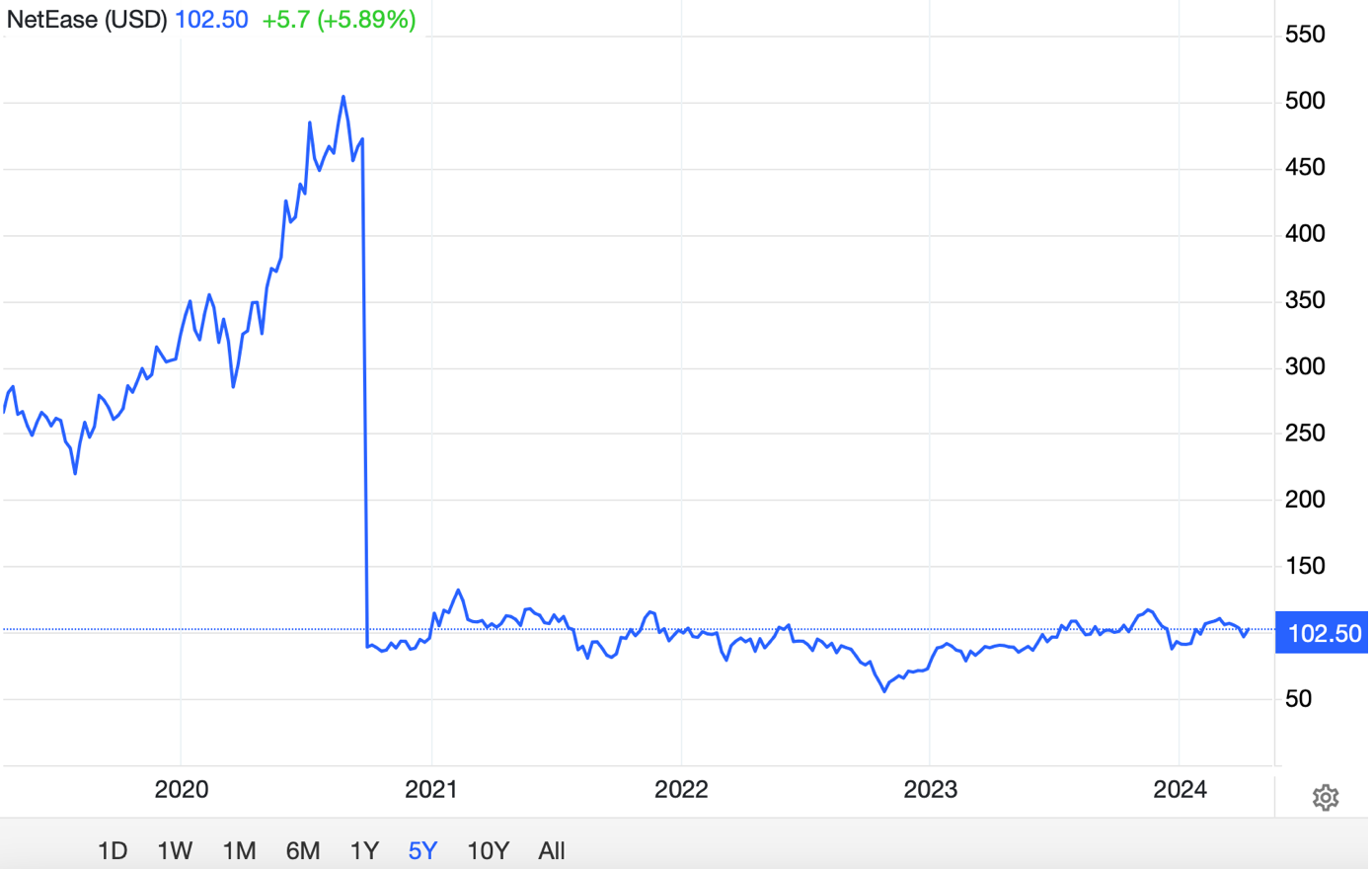Renewed Partnership with NetEase
The resurrection of a 15-year fruitful collaboration, which saw NetEase distribute Blizzard's major titles in China, including Hearthstone, Diablo, Overwatch, and Warcraft, signals a promising horizon for both entities. Particularly striking is the potential expansion of NetEase titles to Microsoft’s Xbox platform— a strategic move that could mark significant inroads into the vast Chinese gaming market, primarily dominated by PC gaming.
Market Response and Investor Confidence
This partnership revival, following a brief hiatus in 2023, has been met with an upward nudge in NetEase’s stock value. A modest 0.2% rise in Hong Kong shares may appear tepid, but when placed against the backdrop of nearly a 4% surge in the previous session, the narrative unfolds more optimistically. Likewise, NetEase’s American Depository Receipts (NASDAQ: NTES) enjoyed a nearly 4% increase in overnight trade, underscoring investor confidence in the rekindled deal. *

NetEase stock performance over the past five years*
From my perspective, this development isn't merely about numbers; it's about tapping into a significant player base in China, where Blizzard has historically enjoyed substantial patronage. This new chapter could very well be an inflection point for Blizzard, which has faced headwinds in North America over its stewardship of key franchises.
Microsoft’s Strategic Foresight
In the grand chessboard of global gaming politics, Microsoft's moves are clear—gain a solid foothold in a territory where the tech behemoth can unleash the full potential of its gaming repertoire. This goes beyond conventional market penetration; it's a well-orchestrated foray into a sphere where PC gaming reigns supreme, with a calculated bet on cross-platform diversification that promises to yield a bounty of user engagement and financial success.
Reflecting on the Investment Horizon
As an investor, witnessing Microsoft's adroit manoeuvring to bolster its gaming division, especially post its takeover of Activision-Blizzard, has been nothing short of reassuring. The venture is not without its risks—navigating the complex landscape of the Chinese market, regulatory frameworks, and consumer predilections will test the mettle of this renewed alliance.
Nevertheless, the potential rewards seem to tower over these challenges. The market's immediate response, reflected in the stock upticks, mirrors my sentiment—cautiously optimistic yet fervently hopeful for the tangible gains this partnership could deliver. * With an eagle eye on the unfolding developments, I am poised to witness how this strategic collaboration unfolds in the high-stakes game of international tech and gaming dominance.
* Past performance is no guarantee of future results.








